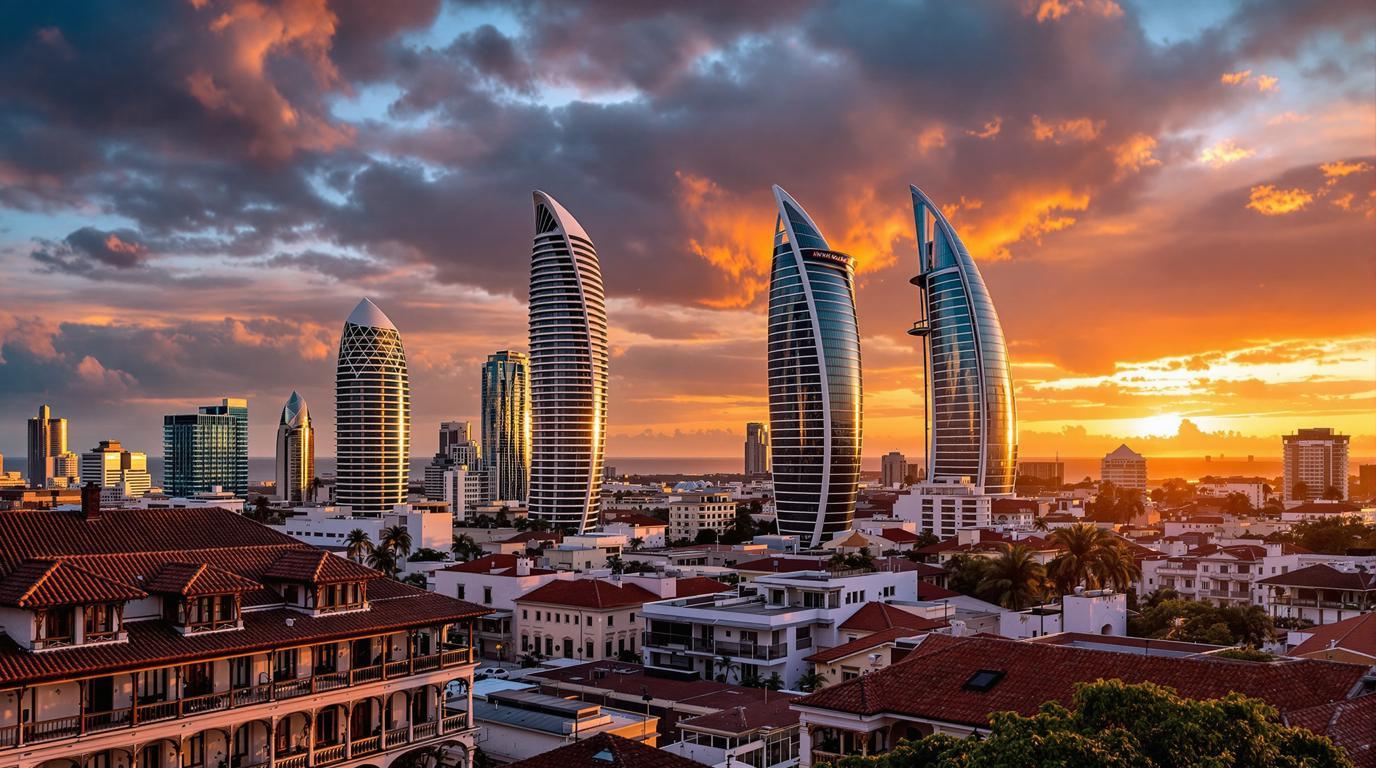Panama City stands as one of Central America’s most striking urban landscapes, where gleaming skyscrapers create a dramatic backdrop against the colonial charm of its historic quarter. The juxtaposition between modern ambition and centuries-old heritage creates a visual symphony that few capital cities in the region can match.
A tale of two cities: Modern skyline meets colonial past
Panama City’s skyline rivals those of Miami and Singapore, with its collection of innovative architectural designs stretching along the Pacific coast. The twisted F&F Tower (nicknamed “The Corkscrew”) and sail-shaped Trump Ocean Club compete for attention among dozens of luxury high-rises that have transformed this once-modest capital into a banking powerhouse.
Just a short drive away, 16th-century Casco Viejo creates an entirely different atmosphere. This UNESCO World Heritage site features Spanish colonial buildings with wooden balconies, brick-paved plazas, and centuries-old churches that transport visitors back in time.
“The magic of Panama City is this perfect tension between past and present. Where else can you sip coffee in a 300-year-old plaza with a backdrop of ultramodern skyscrapers?” says Antonio Bermúdez, a local historian.
Casco Viejo: The beating heart of Panamanian culture
Once considered dangerous and dilapidated, Casco Viejo has undergone a remarkable transformation over the past decade. Boutique hotels now occupy meticulously restored colonial buildings, while rooftop bars offer craft cocktails with panoramic views of the modern city across the bay.
Wandering through Casco’s narrow streets reveals hidden gems around every corner—artisan gelato shops, independent bookstores, and local designers showcasing Panama’s traditional crafts with contemporary twists. The district pulses with energy come sunset, when music spills from open-air restaurants onto vibrant plazas.
Panama City’s architectural renaissance
Beyond the famous canal that splits continents, Panama City’s modern architecture deserves recognition in its own right. The multicolored, petal-shaped Biomuseo, designed by Frank Gehry, celebrates the country’s biodiversity while making a bold architectural statement along the Amador Causeway.
The city’s skyline continues evolving, with ambitious projects like the 70-story Bahia Grand Panama and the Ocean Reef Islands—artificial islands featuring luxury residences that extend into the Pacific. Like France’s innovative wine museum, Panama City embraces architectural creativity to enhance tourism.
Beyond postcard views: Local life where cultures converge
While tourists flock to Casco Viejo and the Panama Canal, locals recommend exploring the Cinta Costera—a waterfront promenade where Panamanians gather for evening strolls, outdoor exercise classes, and weekend family outings. The seafood market (Mercado de Mariscos) offers the freshest ceviche served unpretentiously in plastic cups.
“To understand Panama City, you must experience both worlds. Eat breakfast with locals at the fish market, then watch the sunset from a Casco Viejo rooftop. This is how you feel our city’s rhythm,” explains Maria Torres, a Panama City tour guide.
When to experience Panama City’s dual personality
The dry season (December through April) offers the most comfortable weather for exploring both the historic district and modern areas. November brings independence celebrations with colorful parades through the city streets. Unlike lesser-known Caribbean destinations, Panama City experiences a distinct high season.
Morning provides the best light for photographing the historic quarter, while the modern skyline dazzles at sunset when buildings illuminate against darkening skies. The contrast becomes most dramatic during the blue hour, when Casco Viejo’s warm yellows glow against the cool blues of distant skyscrapers.
Day trips that complement the urban experience
After exploring the city’s contrasting neighborhoods, consider venturing to nearby attractions. The historic Panama Canal railway offers experiences reminiscent of Europe’s spectacular mountain train journeys, while Soberania National Park provides rainforest hiking just 25 minutes from downtown.
Taboga Island, accessible by ferry, offers beaches and hiking trails, making an excellent contrast to urban sightseeing. Like France’s hidden medieval villages, these nearby escapes provide authentic experiences beyond tourist hotspots.
Discovering hidden architectural treasures
Beyond obvious landmarks, Panama City rewards curious travelers with architectural surprises. The Metropolitan Cathedral in Casco Viejo conceals fascinating details in its design, similar to Renaissance masterpieces with hidden architectural secrets.
Panama City represents Central America’s boldest statement of past meeting present—where colonial-era bells ring against a backdrop of glass and steel monuments to modernity, creating a uniquely photogenic cityscape waiting to be explored.
